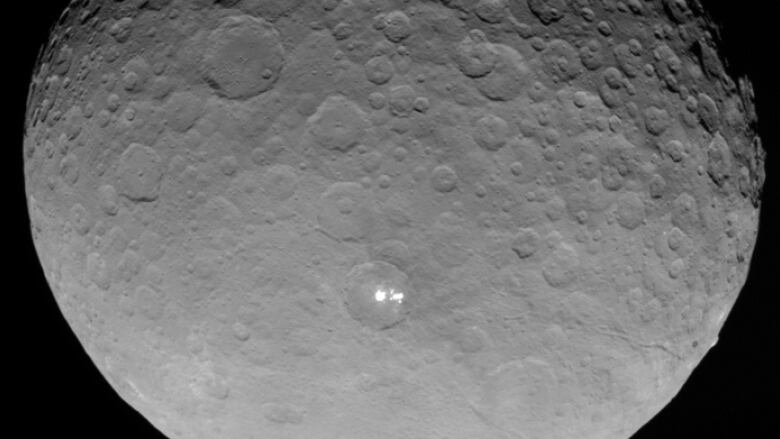Bright spots on Ceres get closer look from Dawn spacecraft
Spots caused by reflection off shiny surface such as ice, scientists confirm

Sharper images from the Dawn spacecraft have given scientists abetter idea of what is causing the mysterious bright spots on the dwarf planet Ceres.
#Ceres seems to have "highly reflective material on the surface, possibly ice" -C. Russell http://t.co/yBHTSC270N http://t.co/9NMDDedGzL
—@NASA_DawnThe brightest spots in a crater in Ceres's northern hemisphere are actually made up of many smaller spots, NASA reported Monday.
"Dawn scientists can now conclude that the intense brightness of these spots is due to the reflection of sunlight by highly reflective material on the surface, possibly ice," said Christopher Russell, principal investigator for the mission, in a statement.
Scientists first noticed bright spots on the surface ofCeresin images taken by the Hubble telescope years ago.
But they became very obvious as the Dawn spacecraft approached Ceres en route to becoming the first spacecraft to enter the dwarf planet's orbit on March 8.
By late February, it appeared that one crater on Ceres contained two bright spots.
Some scientists had previously suggested that the spots might be caused by sun reflecting off the ice. Others thought they might originatefrom volcanic activity.
The latest images were taken by Dawn from an altitude of 13,600 kilometres above Ceres. The spacecraft is now descending to an altitude of4,400 kilometres, where it will create detailed maps of the surface.
Ceres, located in the main asteroid belt between Mars and Jupiter,is about 965 kilometres across. Dawn, launched in 2007, is visiting as part of a$473-million US mission that included a previous stop at the asteroid Vesta.












_(720p).jpg)


 OFFICIAL HD MUSIC VIDEO.jpg)
.jpg)



























































































